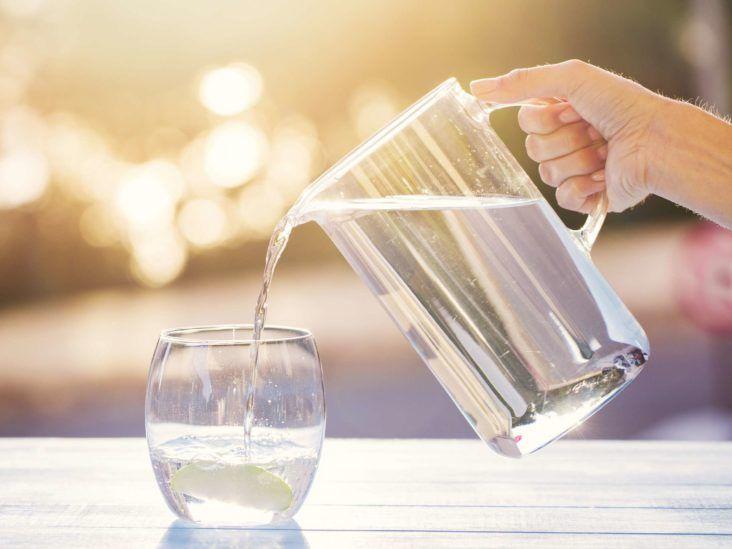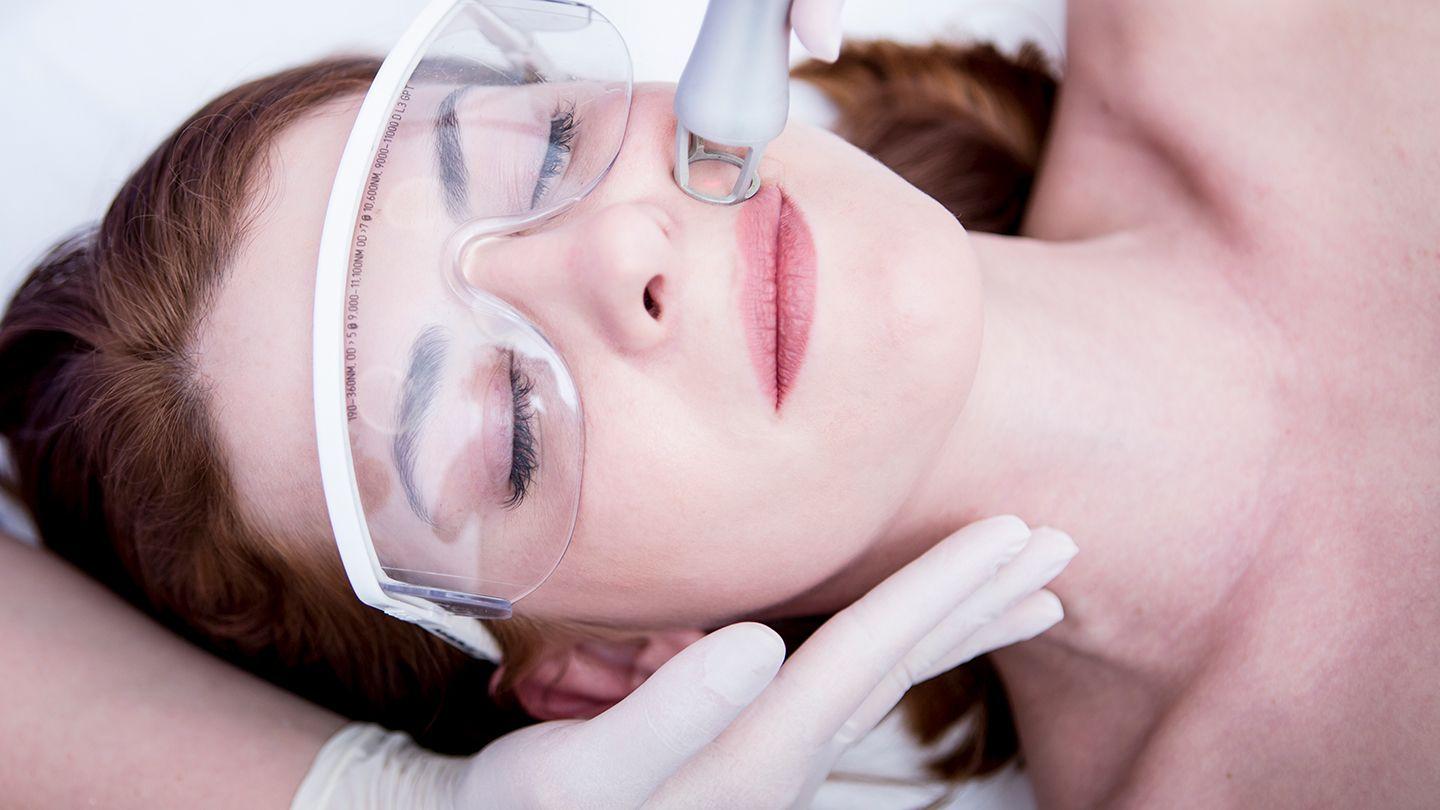Imagine this: you’ve just emerged from a high-tech, rejuvenating laser treatment—a modern medical marvel promising flawless skin transformation. As you admire the immediate results, however, reality beckons with practical questions. Chief among them? When is it safe to take that much-deserved, relaxing bath. The soothing allure of warm water might call out to you, but the pathway to your post-laser pampering has a few crucial guidelines. Let’s dive into the depths of understanding the perfect harmony between your skin’s healing process and the bliss of your next bath.
Understanding the Immediate Aftercare: The First 24 Hours
In the 24 hours following your laser treatment, your skin will be in a particularly sensitive state, making it essential to follow specific aftercare instructions to ensure optimal healing and avoid complications. Understanding your skin’s immediate needs post-laser can dramatically improve your recovery journey and enhance the results of the treatment.
To begin with, it’s crucial to avoid hot baths and showers within the first day. The elevated temperature can exacerbate skin irritation and prolong redness. Instead, opt for mild lukewarm water if you need a quick rinse, but avoid prolonged soaking. This initial period is all about minimizing stress on the treated areas and keeping them cool and calm.
- Avoid using harsh soaps or cleansers – Stick to gentle, fragrance-free products to cleanse the treated areas.
- Keep the skin moisturized – Use a hydrating, non-comedogenic moisturizer to maintain the skin’s moisture barrier.
- Refrain from applying makeup – Give your skin a break from cosmetics to allow it to breathe and heal naturally.
In addition, it’s wise to avoid any activities that might induce excessive sweating or expose your skin to heat. This includes exercising, using saunas, and even sunbathing. Sun exposure should be minimized, and if you must go outside, ensure you’re using a mineral-based sunscreen with a high SPF. Depending on your treatment, your dermatologist may provide more personalized guidelines, so adhere closely to their advice to maintain the health and beauty of your skin.
| Action | Recommended Practice |
|---|---|
| Showering | Lukewarm, brief |
| Moisturizing | Hydrating, fragrance-free |
| Sun Exposure | SPF 30+, minimal |
| Exercise | Avoid first 24 hours |

Cooling Down: Managing Redness and Sensitivity
Post-laser treatment can leave your skin feeling tender and looking flushed. It’s essential to prioritize cooling and soothing to manage any redness and sensitivity effectively. Applying cold compresses is a straightforward yet highly effective method. Simply wrap some ice cubes in a soft cloth or use a cold gel pack and gently press it against the affected areas. This helps to reduce inflammation quickly.
Another way to soothe your skin is by choosing the right skincare products. Opt for fragrance-free and hypoallergenic moisturizers to nourish and calm your skin. Products containing aloe vera, chamomile, or oat extract are particularly beneficial. Avoid using any products with alcohol or strong fragrances, as they can exacerbate irritation.
- Consider using a cool mist humidifier in your room to keep the air moist, which helps in soothing dry and irritated skin.
- Avoid direct sun exposure by wearing a broad-spectrum SPF 30 or higher sunscreen, even if you plan to stay indoors most of the time.
- Dress in soft, breathable fabrics like cotton to minimize further irritation.
| Do | Don’t |
|---|---|
| Use cold compresses | Expose skin to direct sunlight |
| Apply fragrance-free moisturizers | Use alcohol-based products |
| Wear soft, breathable clothing | Engage in vigorous exercise |
It’s also important to keep overall skin hydration at optimal levels. Drinking plenty of water will help maintain your skin’s elasticity and speed up the healing process. Additionally, consider incorporating foods rich in omega-3 fatty acids and antioxidants, such as salmon and berries, into your diet. Both substances are known to combat inflammation and promote skin health from within.
Hydration and Healing: Why Moisturizing Matters
The importance of hydration after laser treatments can’t be overstated. Your skin’s natural barrier is compromised, making it more susceptible to dryness and irritation. Applying a moisturizer immediately after the procedure helps lock in moisture and promotes faster healing. Look for ingredients like hyaluronic acid, ceramides, and aloe vera, which provide deep hydration while soothing any redness or sensitivity.
Besides topical treatments, increasing your water intake can significantly impact your skin’s recovery journey. Drinking sufficient water helps flush out toxins and facilitates cellular repair. While it’s tempting to resort to caffeinated beverages, which can dehydrate you, opt instead for herbal teas or infused water with cucumbers and mint.
- Hyaluronic acid: Holds up to 1,000 times its weight in water
- Ceramides: Reinforce the skin’s natural barrier
- Aloe vera: Soothes and reduces inflammation
Additionally, a humidifier can be a game-changer, especially if you live in a dry climate. Using it during your sleep reduces the chances of your skin drying out overnight. Incorporating these moisture-boosting agents creates an ideal environment for your skin to heal effectively, making you feel pampered and well-cared for post-laser treatment.

Water and Wounds: When to Retake Your Bathing Ritual
After undergoing a laser treatment, your skin requires special care and attention to heal properly. One of the most common questions is when it’s safe to resume your bathing routine. Most dermatologists recommend avoiding long, hot baths immediately post-procedure, but when is it actually safe to relax in your tub again?
To ensure optimal healing, you need to monitor the state of your skin. Look for key signs such as:
- Reduced Redness: Once the intense redness subsides, it’s generally safer to consider a bath.
- Absence of Blisters: Avoid baths if there are any blisters, as they can rupture, leading to infections.
- Closed Wounds: Make sure that any open wounds have fully healed.
Proper water temperature is also vital. Submerging your treated skin in water that is too hot can exacerbate irritation and delay healing. Lukewarm water is your friend during the recovery period. Adding gentle, soothing agents like oatmeal or chamomile can help calm the skin while you bathe. Consider using fragrance-free bath products to prevent further irritation.
Here’s a quick reference table to determine when to get back into your bathing routine:
| Time Post-Laser | Bathing Guideline |
|---|---|
| 1 Day | No baths; gentle sponge bath |
| 3 Days | Lukewarm showers; avoid soaking |
| 7 Days | Short baths, ensuring no blisters or open wounds |
| 14+ Days | Resume normal bathing, monitoring skin closely |

Signs to Watch: Indications You’re Ready for a Soak
After undergoing a laser treatment, it’s natural to crave the soothing embrace of a warm bath. However, ensuring your skin is ready for immersion is crucial to optimizing your recovery. Here are some subtle yet significant signals that indicate you might be ready to indulge in that long-awaited soak:
- Reduced Redness: One of the most visible indicators is the reduction of redness on your treated skin. If the fiery hue has faded to a subtle pink or completely disappeared, your skin may be settled enough for a gentle bath.
- Absence of Swelling: Swelling often accompanies laser treatments as your skin responds to the procedure. If your skin feels less taut and the swelling subsides, this is a promising sign of recovery.
- No Oozing or Crusting: Your skin’s surface should be dry and free from any oozing or crusting. These symptoms generally indicate that the skin is still in the healing phase, and immersion could disrupt this delicate process.
- Comfortable Touch: When light touches no longer cause discomfort, it could mean your skin barrier is rebuilding and may handle the gentle enveloping warmth of a bath without irritation.
If you’re still uncertain whether your skin is ready, consulting this helpful table might offer the clarification you need:
| Skin Condition | Action |
|---|---|
| Mild Redness/No Swelling | Safe for Soak |
| Intense Redness/Swelling | Wait and Heal |
| No Oozing/Crusting | Safe for Soak |
| Oozing/Crusting | Continue Recovery |
| Comfortable to Touch | Safe for Soak |
| Pain to Touch | Continue Recovery |
Pay attention to the nuances of your skin’s behavior after laser treatment. Observing these indicators can guide you toward understanding when you might resume your bath routine without compromising your skin’s health. Patience during this period ensures not only a quicker recovery but also maximizes the benefits of your treatment.
A gentle bath can serve as more than just a cleansing ritual—it can become a nurturing sanctuary for your skin. Once you’ve observed these signs and decided to proceed, ensure the water is lukewarm and avoid any harsh soaps or bath salts. Remember, pampering your skin should be a blend of indulgence and mindful care.
Q&A
Q&A: Post-Laser Pampering: When is it Safe to Take a Bath?
Q1: Why is aftercare important following a laser treatment?
A1: Aftercare is crucial because laser treatments, while effective, leave your skin vulnerable and sensitive. Proper aftercare ensures optimal healing, prevents infections, and maximizes the treatment’s efficacy. It’s like giving your skin the R&R it deserves after a stringent workout.
Q2: When can I safely indulge in a bath post-laser treatment?
A2: Patience is key. Generally, it’s advisable to avoid soaking in a bath for at least 48 to 72 hours after your laser treatment. This window allows your skin to start its healing process unperturbed by potential irritants found in baths, such as hot water, soap, and bacteria.
Q3: Why is it necessary to wait before taking a bath?
A3: Taking a bath too soon can compromise the integrity of the treated area. The warmth and water can exacerbate redness and swelling, while soaps and bath products might introduce irritants or infections. Essentially, think of your skin as a freshly painted masterpiece—handle with care!
Q4: Can I take showers instead while waiting to take a bath?
A4: Yes, showers are generally a safer option. Make sure to keep the water lukewarm and avoid directing high-pressure water streams directly onto the treated area. Additionally, use gentle, fragrance-free cleansers to keep the area clean without causing irritation.
Q5: Are there any signs I should watch out for after the treatment?
A5: Definitely. Keep an eye out for unusual symptoms like excessive redness, swelling, blistering, or signs of infection such as pus or an unpleasant odor. If any of these occur, contact your dermatologist or the clinic immediately. Monitoring your skin can be the difference between a smooth recovery and potential complications.
Q6: How can I pamper my skin while waiting to take a bath?
A6: Treat your skin to some tender loving care with gentle, fragrance-free moisturizers recommended by your dermatologist. Hydration is your skin’s best friend now. Steering clear of direct sunlight and using a broad-spectrum sunscreen when stepping out can further protect your skin as it heals.
Q7: Are there any long-term skin care tips post-laser treatment?
A7: Absolutely. Focus on a regular, gentle skincare routine that includes moisturizing and sun protection. Avoid any harsh exfoliants or aggressive treatments until your skin is back to its robust self. Think of it as a spa retreat for your skin—a little kindness goes a long way.
By following these aftercare guidelines, you can ensure a smooth recovery and enjoy the full benefits of your laser treatment. So, go ahead and dream of that luxurious bath—just not yet!
Closing Remarks
As the steam from your bath swirls into serpentine ribbons, you’d now know that the anticipation of submerging into the warmth is no longer forbidden territory. Your journey through post-laser pampering has illuminated the path from healing to indulgence, hand-in-hand with knowledge and patience. So, when the time is finally right, let your toes breach the surface and revel in that first satisfying soak, knowing that your skin, like your spirit, has emerged resilient and ready to embrace the epitome of relaxation. Happy soaking!






